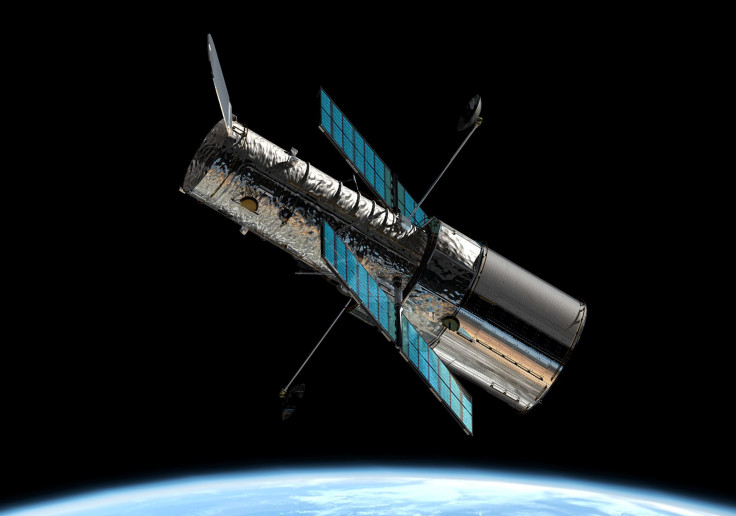Hubble’s 25th Anniversary Marked By Spectacular Image Of Giant Cluster Of 3,000 Stars

NASA’s Hubble Space Telescope turned 25 on Friday, and to mark the occasion, the space agency unveiled an image of young stars, resembling glittering fireworks. The image, which was released to commemorate a quarter century of exploration of the solar system and beyond by Hubble, has been designated as the official image for the twenty-fifth anniversary of the space telescope, which was launched on April 24, 1990.
The sparkling image shows a giant cluster of about 3,000 stars, called “Westerlund 2,” which is named after Swedish astronomer Bengt Westerlund, who discovered the grouping in the 1960s. The star cluster exists in a harsh stellar breeding ground known as “Gum 29,” which is located 20,000 light-years away from Earth in the constellation Carina.

“Hubble has completely transformed our view of the universe, revealing the true beauty and richness of the cosmos” John Grunsfeld, astronaut and associate administrator of NASA’s Science Mission Directorate, said in a statement. “This vista of starry fireworks and glowing gas is a fitting image for our celebration of 25 years of amazing Hubble science.”
To capture the image, Hubble’s near-infrared Wide Field Camera 3 peeped through a dusty cloak surrounding the stellar grouping, allowing astronomers to get a clear view of the nebula -- a bunch of atoms and molecules floating in outer space like a cloud of dust -- and the dense concentration of stars in the central cluster.
According to astronomers, the giant star cluster is nearly 2 million years old, and contains the galaxy’s hottest, brightest and most massive stars. Some of the cluster’s largest stars release streams of ultraviolet light and powerful winds of charged particles.
“The nebula reveals a fantasy landscape of pillars, ridges and valleys,” according to a NASA statement. “The pillars, composed of dense gas and thought to be incubators for new stars, are a few light-years tall and point to the central star cluster. Other dense regions surround the pillars, including reddish-brown filaments of gas and dust.”
On Thursday, NASA also released a video, titled “Hubble Memorable Moments: Powering Down,” which describes the process of replacing the Power Control Unit during the Hubble Servicing Mission 3B in March 2002. The power control unit distributes energy from Hubble’s solar arrays and batteries to all the components of the telescope.
Here’s the video:
© Copyright IBTimes 2024. All rights reserved.






















